1. Introduction
1.1 Understanding Circuit Breakers and Their Importance
Electrical systems operate under high voltage and current levels, necessitating robust protection mechanisms. Circuit breakers serve as critical safety devices designed to interrupt excessive electrical flow and prevent potential damage to equipment and infrastructure.
These devices operate automatically or manually to disconnect faulty sections, ensuring operational continuity and personnel safety. Without circuit breakers, electrical grids and industrial systems would be susceptible to severe damage from faults such as short circuits, overloads, and insulation failures.
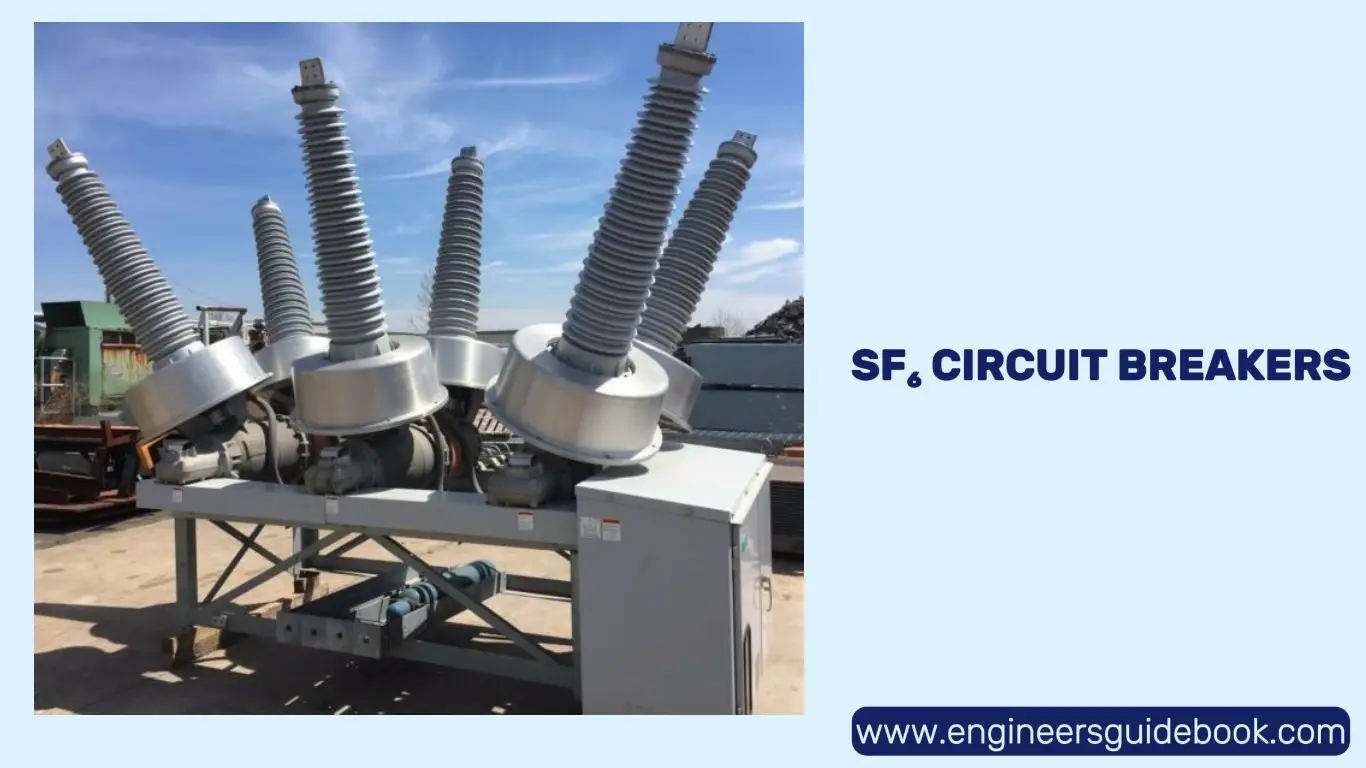
1.2 Why SF₆ Circuit Breakers Stand Out
Among the various types of circuit breakers, SF₆ (sulfur hexafluoride) circuit breakers have gained prominence due to their superior insulating and arc-quenching properties. SF₆ gas exhibits exceptional dielectric strength, enabling efficient operation at high voltage levels while maintaining compact equipment size.
Unlike traditional air or oil circuit breakers, SF₆ variants offer enhanced reliability, low maintenance requirements, and extended service life. These attributes make them indispensable in high-voltage power transmission and industrial applications.
1.3 Scope and Purpose of This Guide
This guide provides a comprehensive exploration of SF₆ circuit breakers, detailing their working principles, components, types, advantages, and safety considerations. It serves as an essential resource for engineers, technicians, and professionals seeking in-depth knowledge about this advanced switching technology.
2. Fundamentals of SF₆ Circuit Breakers
2.1 What is SF₆ Gas?
SF₆, or sulfur hexafluoride, is a synthetic gas known for its remarkable electrical insulation properties. It is colorless, odorless, non-toxic, and chemically inert, making it highly stable under standard operating conditions. This gas is widely used in high-voltage applications due to its ability to withstand electrical stress without breaking down.
2.2 Unique Properties of SF₆ Gas
- High Dielectric Strength: SF₆ possesses dielectric strength approximately 2.5 times that of air, allowing for compact circuit breaker designs.
- Thermal Stability: The gas remains stable even under extreme temperatures, ensuring reliable operation in diverse environments.
- Non-Flammability: Unlike oil-based circuit breakers, SF₆ is non-combustible, enhancing safety.
- Excellent Arc-Quenching Ability: The ability of SF₆ to rapidly cool and extinguish electrical arcs ensures efficient fault interruption.
- Low Liquefaction Point: SF₆ remains gaseous under a wide range of temperatures, facilitating its use in varied climatic conditions.
2.3 How SF₆ Enhances Circuit Breaker Performance
SF₆ gas plays a crucial role in enhancing the performance of circuit breakers by providing superior insulation and effective arc extinction. Its high-pressure application ensures minimal contact wear, reducing maintenance requirements.
Additionally, SF₆ circuit breakers operate with reduced noise levels, contributing to a safer and more efficient power distribution network.
3. Working Principle of SF₆ Circuit Breakers
3.1 Arc Formation and Quenching Mechanism
When a circuit breaker operates to interrupt a fault current, an electric arc forms between the separating contacts. This arc must be extinguished rapidly to prevent damage and restore normal operation. In SF₆ circuit breakers, the gas absorbs and dissipates the arc energy effectively.
3.2 Role of SF₆ in Arc Extinction
SF₆ gas undergoes rapid recombination after arc extinction, ensuring minimal energy loss and efficient insulation recovery. The gas molecules absorb free electrons, reducing ionization and facilitating the quick dissipation of the arc plasma. This ensures effective current interruption even at extremely high voltages.
3.3 Step-by-Step Operation of an SF₆ Circuit Breaker
- Fault Detection: Protective relays detect abnormal electrical conditions and trigger the breaker.
- Contact Separation: The breaker mechanism forces the contacts apart, initiating an arc.
- Arc Quenching: SF₆ gas absorbs energy and cools the arc, leading to its extinction.
- Dielectric Recovery: The gas recombines, restoring insulation strength and preventing re-ignition.
- System Restoration: Once the fault clears, the breaker can be reset for normal operation.
4. Key Components of an SF₆ Circuit Breaker
4.1 Interrupter Unit: The Core of the System
The interrupter unit is responsible for arc extinction. It contains SF₆ gas chambers and current-carrying contacts designed for efficient fault interruption. The design ensures minimal arc duration and effective cooling.
4.2 Gas Chamber: Storage and Regulation of SF₆
This chamber holds the SF₆ gas at a specified pressure level, ensuring optimal insulation and quenching properties. The pressure is regulated to maintain consistent performance over time.
4.3 Operating Mechanism: Controlling the Breaking Process
The operating mechanism controls the movement of breaker contacts during opening and closing operations. It can be pneumatic, hydraulic, or spring-operated, depending on the design.
4.4 Sealing System: Preventing Gas Leakage
The sealing system ensures that SF₆ gas remains contained within the breaker. Special gaskets and seals prevent leaks, maintaining gas pressure and ensuring long-term reliability.
4.5 Insulation System: Ensuring Dielectric Strength
The insulation system, primarily composed of SF₆ gas, provides the necessary electrical insulation between conductive components, preventing flashovers and electrical breakdowns.
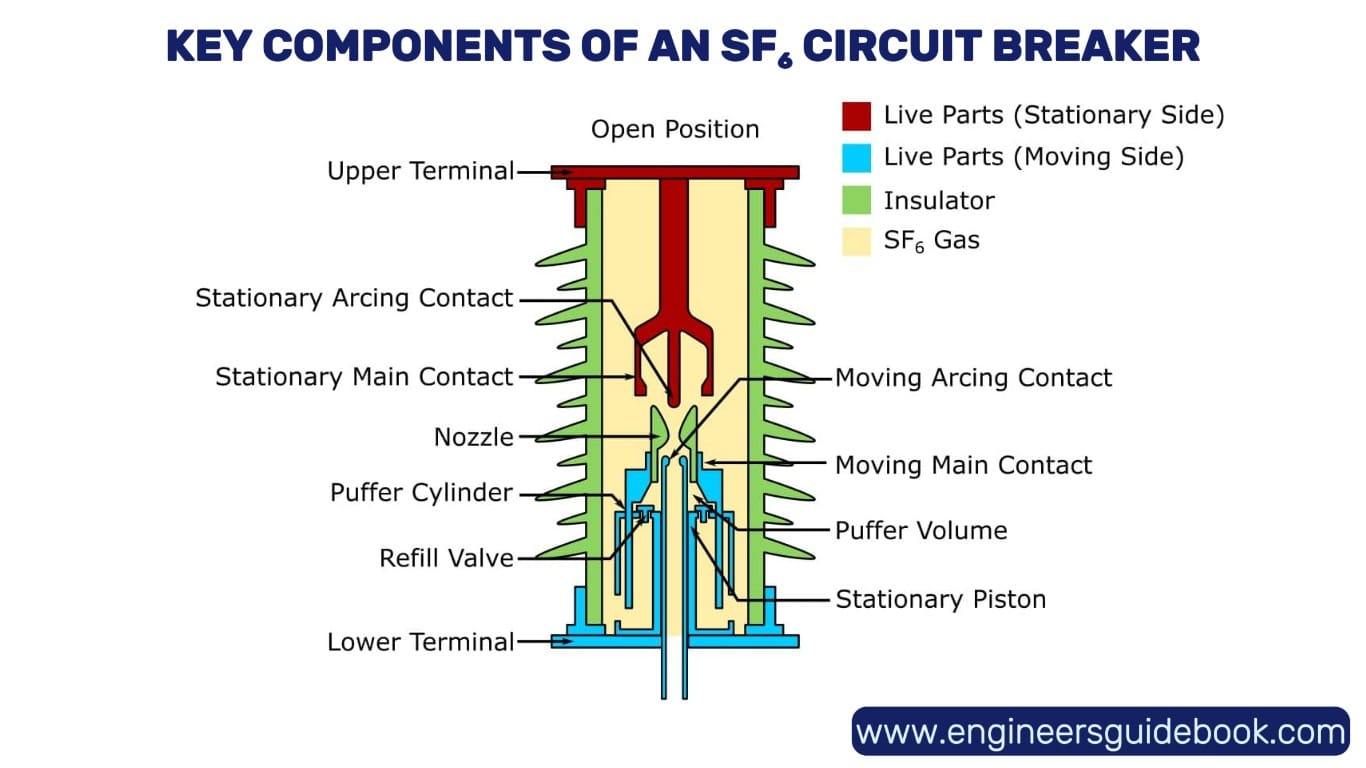
5. Types of SF₆ Circuit Breakers
5.1 Single-Pressure vs. Double-Pressure SF₆ Circuit Breakers
- Single-Pressure Design: Utilizes SF₆ at a uniform pressure level, simplifying design and maintenance.
- Double-Pressure Design: Employs high-pressure and low-pressure compartments to enhance arc extinction, though it is less commonly used due to complexity.

5.2 Dead Tank vs. Live Tank Design
- Dead Tank: The interrupter is housed in a grounded metal enclosure, providing mechanical robustness.
- Live Tank: The interrupter is suspended above the ground, reducing material costs and improving insulation properties.
5.3 Classification Based on Voltage Levels
SF₆ circuit breakers are available in various voltage ratings:
- Medium Voltage (1kV – 36kV): Used in industrial and distribution networks.
- High Voltage (36kV – 765kV): Common in transmission grids and substations.
- Extra-High Voltage (Above 765kV): Utilized for intercontinental power transmission.
5.4 Indoor vs. Outdoor Applications
- Indoor SF₆ Circuit Breakers: Installed in controlled environments, often within substations.
- Outdoor SF₆ Circuit Breakers: Designed to withstand environmental factors such as humidity, temperature variations, and contaminants.
6. Advantages and Disadvantages of SF₆ Circuit Breakers
6.1 Unmatched Insulation and Arc Quenching Capabilities
SF₆ circuit breakers are widely regarded for their superior insulation and arc quenching properties. The sulfur hexafluoride gas provides exceptional dielectric strength, which is crucial for ensuring effective operation in high-voltage environments.
6.2 High Reliability and Low Maintenance Requirements
One of the most prominent advantages of SF₆ circuit breakers is their high reliability. These breakers are designed to endure the demanding conditions of high-voltage networks, requiring minimal maintenance over their operational lifespan.
6.3 Compact Design and Lightweight Structure
SF₆ circuit breakers stand out due to their compact and lightweight design. Compared to traditional oil or air circuit breakers, SF₆ breakers occupy less physical space, making them ideal for environments with space constraints, such as substations and compact industrial systems.
6.4 Environmental Concerns and Global Warming Potential
While SF₆ circuit breakers offer numerous operational benefits, the use of sulfur hexafluoride gas raises significant environmental concerns. SF₆ is a potent greenhouse gas with a global warming potential (GWP) 23,500 times greater than CO₂, contributing to the acceleration of climate change when released into the atmosphere.
6.5 Handling and Disposal Challenges
Another significant challenge associated with SF₆ circuit breakers is the handling and disposal of SF₆ gas. Due to its hazardous properties, it requires specialized procedures during both use and disposal. Proper gas recovery and recycling techniques are essential to prevent environmental damage.
7. Applications of SF₆ Circuit Breakers
7.1 Power Transmission and Distribution Networks
SF₆ circuit breakers are commonly used in power transmission and distribution networks due to their ability to handle high voltages and efficiently interrupt current during faults. These systems rely on the rapid and reliable operation of circuit breakers to ensure the stability of electrical grids.
7.2 Industrial and Commercial Electrical Systems
In industrial and commercial settings, SF₆ circuit breakers play a vital role in safeguarding electrical systems. From manufacturing facilities to commercial buildings, the reliability of SF₆ circuit breakers ensures that electrical systems continue to operate smoothly, minimizing downtime.
7.3 High-Voltage and Extra-High-Voltage Applications
For high-voltage (HV) and extra-high-voltage (EHV) applications, SF₆ circuit breakers are considered the standard due to their ability to effectively manage the large amounts of energy present in these systems.
HV and EHV applications often involve transmission lines that span long distances, making it crucial to use breakers that can quickly interrupt faults and prevent cascading failures. SF₆ breakers meet these requirements, providing reliable protection in both overhead and underground power transmission networks.
7.4 Specialized Applications in Renewable Energy Systems
SF₆ circuit breakers are also gaining traction in specialized applications within renewable energy systems, such as wind and solar power.
These systems often require high-voltage protection to ensure the safe integration of renewable energy into the grid. SF₆ circuit breakers help prevent power surges and manage fault conditions, contributing to the reliability of energy generation and distribution.
8. Maintenance and Safety Considerations
8.1 Routine Inspection and Testing Procedures
Routine inspections and testing are essential to ensuring the reliable operation of SF₆ circuit breakers. Regular checks of the gas pressure and sealing integrity are crucial to maintaining the performance of the breaker.
Tests such as dielectric testing and mechanical inspections help identify any potential issues before they can cause failures, thus reducing the likelihood of unplanned outages. It is also vital to check for any signs of gas leakage, which may indicate wear in the seals or other components.
8.2 SF₆ Gas Handling and Refilling Best Practices
SF₆ gas handling requires meticulous care to ensure safety and minimize environmental impact. Gas refilling should only be done by trained personnel using appropriate equipment to prevent leaks. Furthermore, SF₆ gas cylinders should be stored in a well-ventilated area away from ignition sources.
Operators should follow all safety protocols to manage the gas, ensuring that no accidental releases occur during refilling or routine maintenance activities.
8.3 Leak Detection Methods and Prevention Strategies
Leak detection is one of the most critical aspects of maintaining SF₆ circuit breakers. Common methods include using infrared cameras or gas detectors that are specifically designed to identify SF₆ leaks. Regular monitoring of the gas pressure and visual inspections of seals and gaskets help to detect early signs of leakage.
Implementing a strict leak prevention strategy, such as using high-quality seals and maintaining optimal storage conditions, can significantly reduce the risk of SF₆ emissions.
8.4 Safety Precautions When Working with SF₆ Circuit Breakers
Given the potent nature of SF₆ gas, safety precautions are vital when working with SF₆ circuit breakers. Technicians and engineers must wear protective equipment, such as gloves, face shields, and respiratory protection, especially during maintenance procedures.
8.5 Regulatory Compliance and Environmental Guidelines
The use of SF₆ circuit breakers is governed by strict regulatory and environmental guidelines to mitigate the risks associated with SF₆ emissions. Organizations must comply with local and international standards related to gas emissions, maintenance, and disposal.
The European Union, for example, has enacted stringent regulations on SF₆ emissions under the F-gas Regulation, prompting the development of SF₆-free technologies. Compliance with these regulations ensures that businesses meet environmental goals and avoid costly penalties.
9. Comparison with Other Types of Circuit Breakers
9.1 SF₆ vs. Vacuum Circuit Breakers: Key Differences
Vacuum circuit breakers, like SF₆ breakers, are designed to interrupt current flow, but they utilize vacuum as the dielectric medium. While both types offer excellent arc quenching capabilities, vacuum circuit breakers tend to be smaller and lighter, making them suitable for lower-voltage applications.
However, SF₆ breakers perform better in higher-voltage environments due to the superior insulation properties of SF₆ gas.
9.2 SF₆ vs. Oil Circuit Breakers: Performance and Reliability
Oil circuit breakers use oil as both the insulating and arc-quenching medium. While these breakers have been in use for decades, they are prone to the risk of oil leakage and fire hazards. SF₆ circuit breakers, on the other hand, offer superior performance and reliability, with the added benefit of being non-flammable.
The maintenance requirements for oil circuit breakers are generally higher due to the need for regular oil replacement and filtering.
9.3 SF₆ vs. Air Blast Circuit Breakers: Efficiency and Maintenance
Air blast circuit breakers use compressed air to extinguish the arc. They are commonly used in lower voltage settings but require more frequent maintenance compared to SF₆ circuit breakers. The latter, with their sealed design and minimal maintenance needs, offer greater operational efficiency and lower long-term costs.
Additionally, SF₆ breakers provide better performance in terms of dielectric strength, especially in high-voltage applications.
10. Future Trends and Developments in SF₆ Circuit Breakers
10.1 Advancements in SF₆-Free Alternatives
The drive to reduce the environmental impact of SF₆ has led to the development of SF₆-free alternatives. Technologies such as vacuum and CO₂-based circuit breakers are being explored as sustainable alternatives to SF₆.
These innovations aim to provide the same level of performance while significantly lowering the global warming potential associated with circuit breakers.
10.2 Innovations in SF₆ Gas Recycling and Reuse
Innovative methods for SF₆ gas recycling and reuse are advancing, allowing for the reduction of SF₆ emissions and improving sustainability in electrical systems.
Technologies are being developed to capture and purify SF₆ gas from used equipment, reducing the need for fresh gas and minimizing environmental harm. These advancements contribute to the circular economy by extending the lifecycle of SF₆ circuit breakers.
10.3 Emerging Regulations and Environmental Policies
As environmental concerns continue to grow, regulatory bodies around the world are tightening policies on the use of SF₆. Upcoming regulations are expected to focus more heavily on reducing emissions and promoting the adoption of SF₆-free technologies.
The ongoing development of international standards aims to standardize the management and disposal of SF₆, ensuring a global approach to environmental protection.
11. Conclusion
SF₆ circuit breakers play an essential role in high-voltage electrical systems, offering unmatched arc-quenching capabilities and reliable performance. While they have distinct advantages such as low maintenance, compact design, and high reliability, they also pose environmental challenges due to the global warming potential of SF₆ gas. The industry is actively exploring SF₆-free alternatives and improving recycling methods to mitigate these issues.
SF₆ circuit breakers continue to be a cornerstone in high-voltage protection systems, contributing significantly to the safety and efficiency of power transmission and distribution networks.
As the industry shifts towards greener alternatives, the development of SF₆-free technologies will determine the future trajectory of circuit breaker designs. However, the importance of SF₆ circuit breakers in existing infrastructure cannot be overstated—they remain vital to the reliability and security of global electrical grids.
12. FAQs
12.1 What is the primary advantage of using SF₆ in circuit breakers?
The primary advantage of SF₆ is its exceptional dielectric strength, which allows circuit breakers to operate efficiently at high voltage levels while providing superior arc-quenching capabilities.
12.2 How does SF₆ gas prevent electrical arcs from lasting?
SF₆ gas absorbs the energy from the arc and quickly cools it, facilitating rapid extinction by reducing ionization and recombining gas molecules.
12.3 Are there any environmental concerns related to SF₆ circuit breakers?
Yes, SF₆ is a potent greenhouse gas with a global warming potential thousands of times greater than CO₂, which raises concerns about its environmental impact.
12.4 Can SF₆ circuit breakers be used in all voltage levels?
SF₆ circuit breakers are used across a range of voltage levels, from medium to extra-high voltage, due to their excellent performance and insulating properties.
12.5 What are the alternatives to SF₆ in circuit breakers?
Alternatives to SF₆ include vacuum and CO₂-based circuit breakers, which aim to provide similar performance with less environmental impact.
12.6 How is SF₆ gas handled during maintenance?
SF₆ gas should be handled by trained professionals using appropriate tools and equipment, ensuring no leaks and proper containment during refilling or maintenance.
12.7 What happens if SF₆ leaks from a circuit breaker?
SF₆ leaks can contribute to environmental damage, particularly due to its high global warming potential, making leak detection and prevention critical in maintaining these systems.
12.8 Are SF₆ circuit breakers safe to operate?
Yes, SF₆ circuit breakers are generally safe when operated according to manufacturer guidelines. However, safety protocols should be followed during maintenance and gas handling to minimize risks.
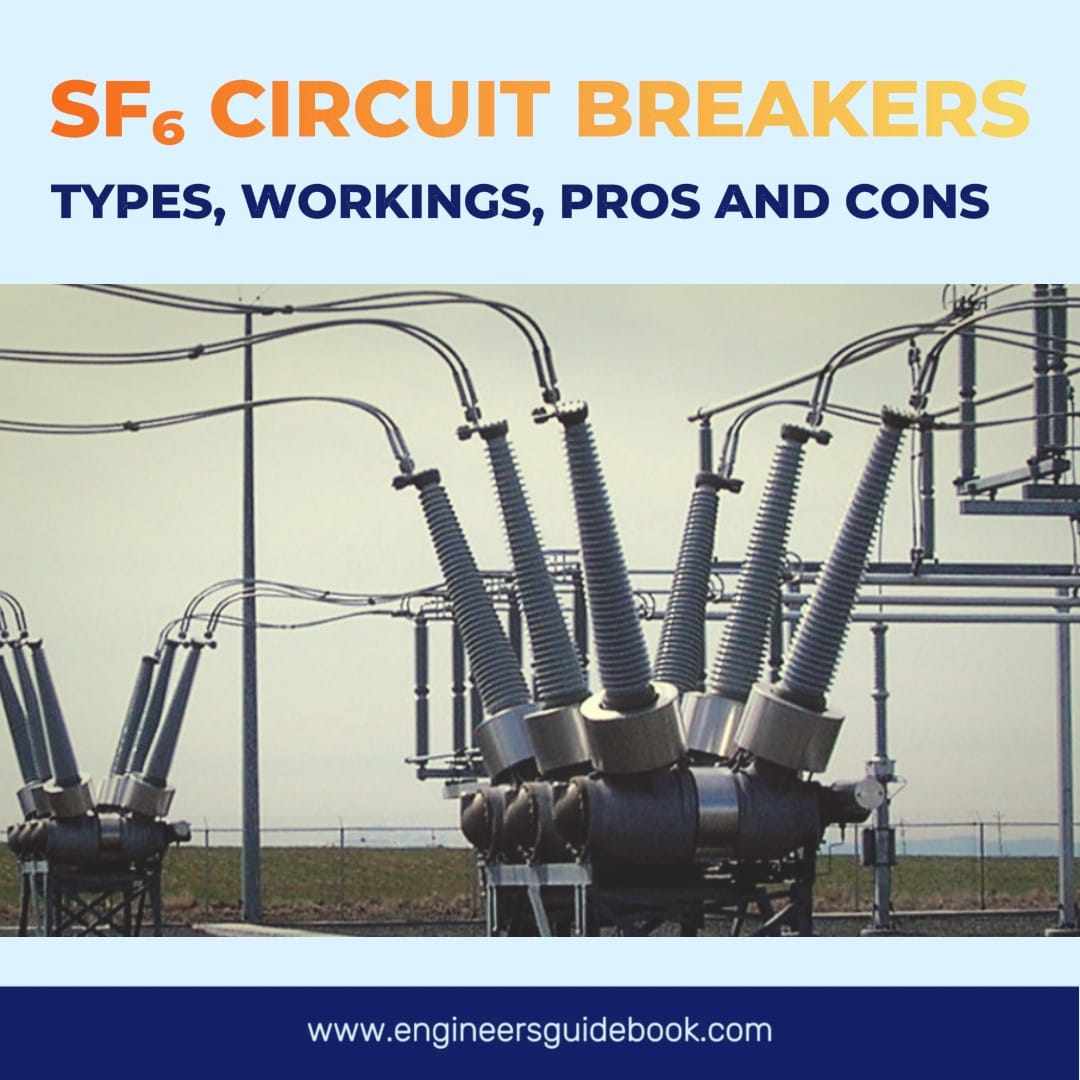

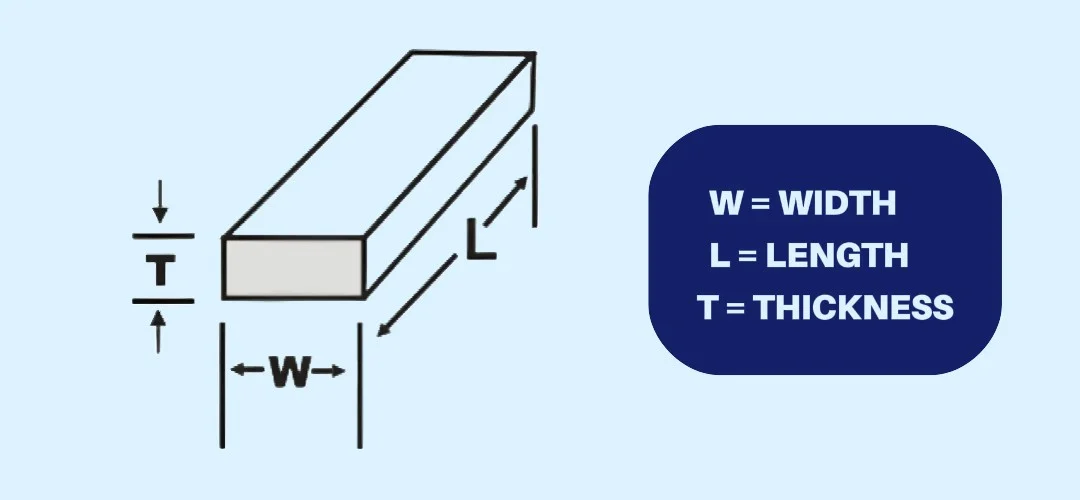

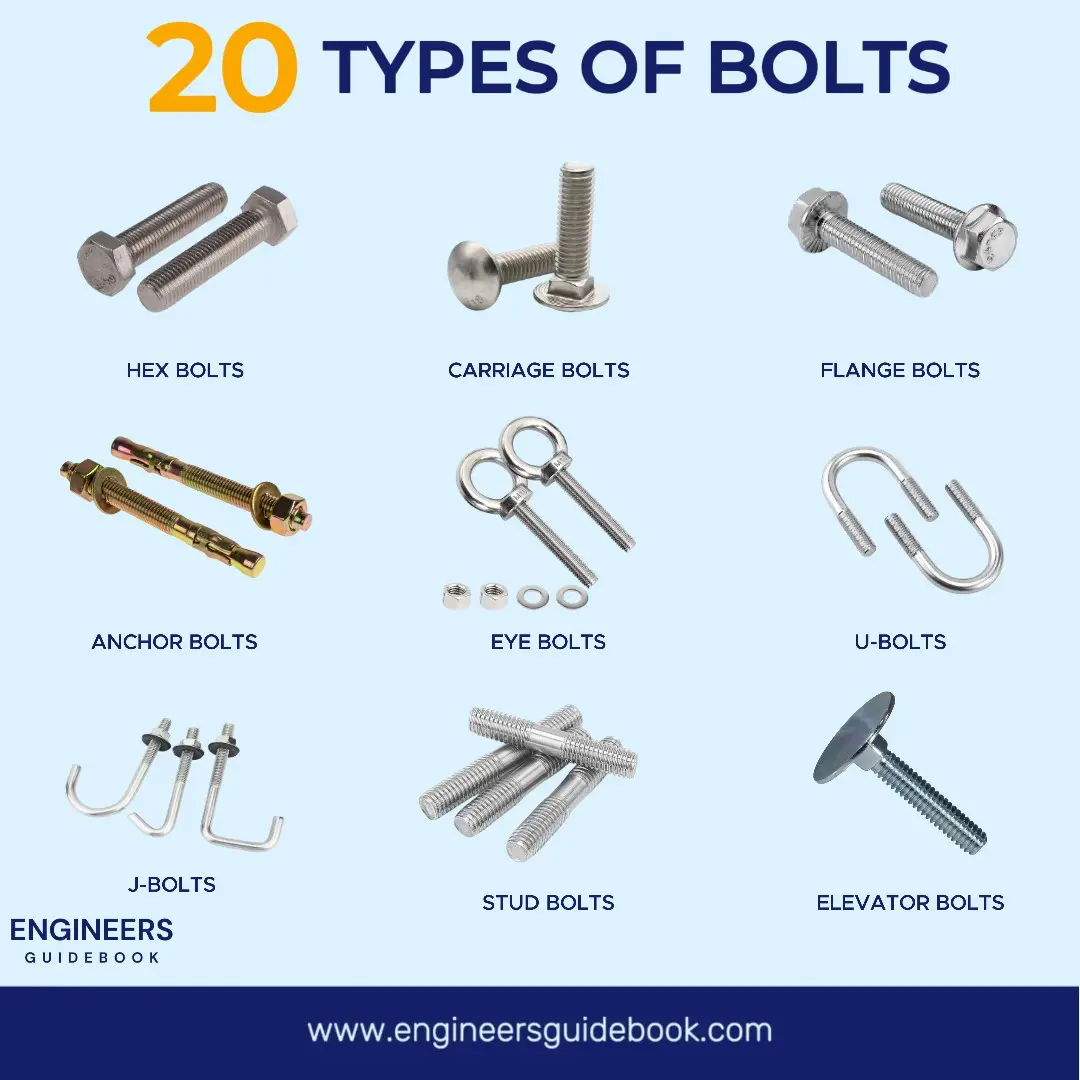
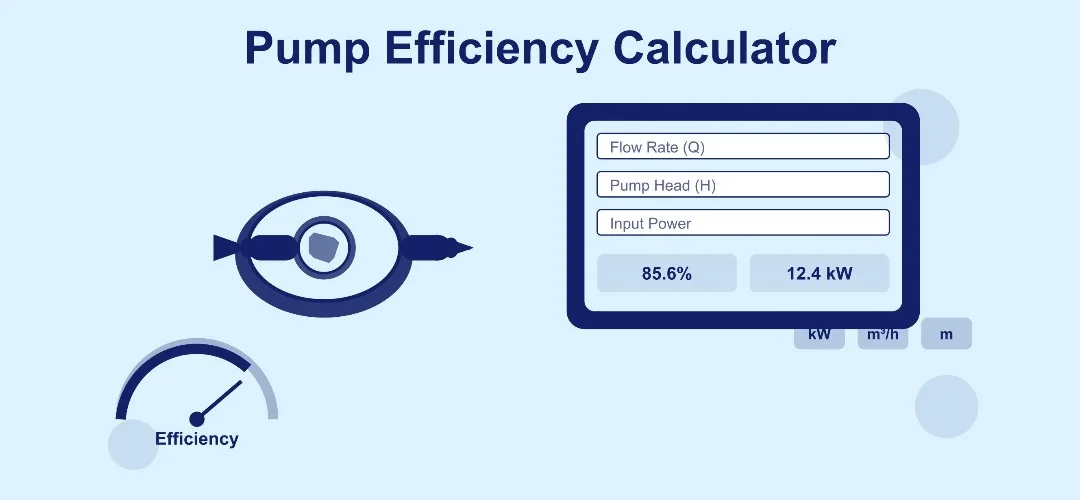

One Response
This blog post is worth the read – trust us!